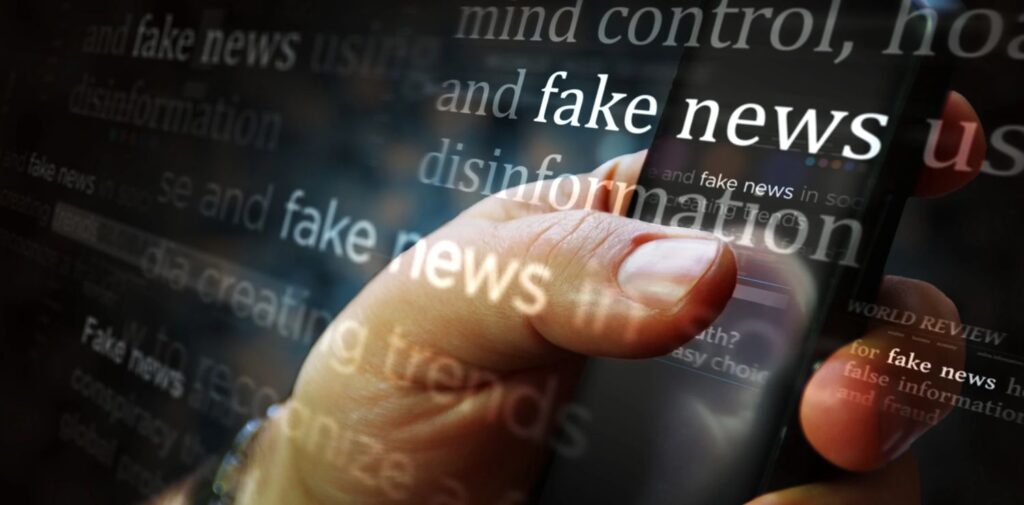In today’s digital world, news and information travel faster than ever before. With just a few clicks, one can access information from across the globe. However, along with the benefits of instant access to news, there is also a growing challenge: the spread of fake news. This is a serious problem that can have wide-reaching effects, from influencing elections to inciting violence. In India, where the internet and social media have become an integral part of daily life, combat fake news has become a priority for the government, organizations, and citizens alike. This article explores India’s efforts to address the issue of fake news and the challenges it faces in the digital era.
Understanding Fake News and Its Impact
Fake news refers to false, misleading, or manipulated information presented as legitimate news. It can take many forms, from fabricated stories to misrepresented facts, often designed to mislead or provoke emotional reactions. In the digital age, social media platforms like Facebook, Twitter, WhatsApp, and YouTube are prime venues for the rapid spread of fake news. The anonymity of online spaces and the viral nature of social media make it easy for misinformation to spread quickly, especially in a diverse and information-hungry society like India.
The impact of fake news can be devastating. It can influence public opinion, fuel communal tensions, cause panic, and even lead to violence. One of the most concerning aspects of fake news in India is its potential to affect elections, public policies, and social harmony. In 2018, for example, a series of fake news stories led to several instances of mob lynching in different parts of India. In such cases, rumors and false information spread through social media led to mob violence, targeting innocent people.

Government Initiatives to Tackle Fake News
Recognizing the dangers posed by fake news, the Indian government has taken several steps to curb its spread. In 2018, the government set up a Fact-Check Unit within the Press Information Bureau (PIB) to verify news before it spreads. This unit works to debunk rumors and fake stories circulating on social media and other digital platforms. The PIB’s fact-checking department regularly issues press releases and tweets clarifying false information, especially on issues related to government policies and public services.
Furthermore, the government has also encouraged the role of media literacy in schools and colleges to educate citizens, especially the younger generation, about recognizing fake news. In 2020, the Ministry of Information and Broadcasting launched an initiative called “Digital Media Ethics Code”, which aimed to regulate social media platforms and news outlets. The code seeks to ensure accountability for digital platforms by encouraging them to take responsibility for the content shared on their platforms, especially when it comes to the spread of misinformation.
In addition, the government has been in talks with social media platforms like Facebook, WhatsApp, and Twitter, urging them to take stronger actions to curb fake news. Several discussions have revolved around identifying and taking down accounts that regularly spread false information. In 2020, the Information Technology (Intermediary Guidelines and Digital Media Ethics Code) Rules, 2021 were introduced to ensure that social media platforms act against misinformation in a more responsible and transparent manner.
Role of Technology and Artificial Intelligence
With the rapid spread of fake news, there has been a growing need for advanced technology to combat the issue. Artificial Intelligence (AI) and machine learning are now being used to detect and flag fake news before it can go viral. In India, companies and organizations have begun to use AI tools to identify patterns in online content and highlight stories that may be fake or misleading. These AI-driven tools can analyze images, videos, and text to check for signs of manipulation or falsehoods.
For example, a company called Acko, a prominent player in India’s insurance market, has used AI to verify the authenticity of the news and information they use in their advertisements. Similarly, organizations like Factly and BoomLive use a mix of technology and human experts to fact-check news and help debunk false claims circulating online.
Another tool that has become a part of India’s efforts to fight fake news is WhatsApp’s Forwarded Feature. Since WhatsApp is a popular platform for spreading rumors and fake information, the messaging service has introduced measures to curb the spread of false messages. One such feature is the label that marks a message as “forwarded many times,” warning users that the message may not be trustworthy. This feature aims to encourage users to be cautious before sharing information.
Despite these technological advancements, AI tools are still not perfect. Fake news creators are constantly evolving their strategies to avoid detection, which means that the fight against misinformation requires constant updates and improvements in technology.

The Role of Media and Journalists
The media plays a crucial role in combating fake news in India. Traditional media outlets like newspapers, television news channels, and radio stations have a responsibility to ensure that the news they present is verified and fact-checked. However, with the rise of online platforms and social media, where anyone can share news, the role of traditional media has become even more important.
Several news organizations in India have strengthened their fact-checking divisions to ensure that they do not contribute to the spread of misinformation. Media houses like The Times of India, NDTV, and The Hindu have dedicated teams that work to identify and correct false news stories. These media outlets have partnered with platforms like Twitter and Facebook to flag and correct fake news. For example, some television news channels have started running segments where they debunk widely circulating fake stories.
Journalists, too, play a vital role in educating the public about fake news. Many journalists in India have taken it upon themselves to raise awareness about misinformation and its dangers. Some have even created online platforms and websites dedicated to fact-checking. Independent journalists are working tirelessly to uncover the truth and educate citizens on how to distinguish fake news from verified information. Through public awareness campaigns, workshops, and seminars, they aim to equip people with the skills needed to identify fake news.
Public Awareness and Media Literacy
A crucial part of fighting fake news lies in educating the public about how to spot it. Media literacy is essential in a world where anyone with access to the internet can spread information, whether it is true or false. In India, various organizations, schools, and universities are making efforts to promote media literacy.
The Media Information Literacy (MIL) campaign, launched by UNESCO, focuses on educating individuals, especially students, on how to critically engage with media and information. This includes teaching people to question the sources of information, look for evidence, and verify claims before believing or sharing news. Many non-governmental organizations (NGOs) are also involved in teaching people how to check the authenticity of news through websites and apps that specialize in fact-checking.
Social media platforms themselves are increasingly emphasizing the importance of media literacy. Facebook and Twitter, for instance, run awareness campaigns in India aimed at encouraging users to be more cautious about what they share and believe. These platforms also provide users with links to reliable sources and fact-checking websites.

Challenges in Combat Fake News
Despite the many efforts being made, combating fake news in India remains a significant challenge. One of the major obstacles is the sheer volume of content being created and shared every minute. With millions of messages, videos, and articles being uploaded every day, it becomes difficult for authorities to monitor everything effectively. Furthermore, many people are still unaware of how to identify fake news, making them more vulnerable to manipulation.
Another challenge is the existence of echo chambers on social media. Many people follow only those whose opinions align with theirs, leading them to believe fake news that supports their views. This makes it harder to counter misinformation because people tend to trust sources that confirm their biases.
Moreover, the speed at which fake news spreads on platforms like WhatsApp makes it particularly difficult to control. Since WhatsApp is a private messaging app, it is challenging for authorities to monitor and intervene in the spread of false information.
Conclusion
India is making significant strides in the fight against fake news, but the battle is far from over. The government, media, technology companies, and citizens must continue to work together to address the issue. While the rise of digital platforms and advanced technologies presents new challenges, it also offers solutions that can help identify and counter misinformation.
Education and media literacy are key to empowering individuals to discern the truth in an era where information is abundant but often unreliable. By continuing to develop new technologies, strengthen laws, and educate the public, India can hope to tackle the challenge of fake news in the digital era and ensure that people can trust the information they receive. Only through collective effort can India overcome the threat of fake news and build a more informed and responsible digital society.




